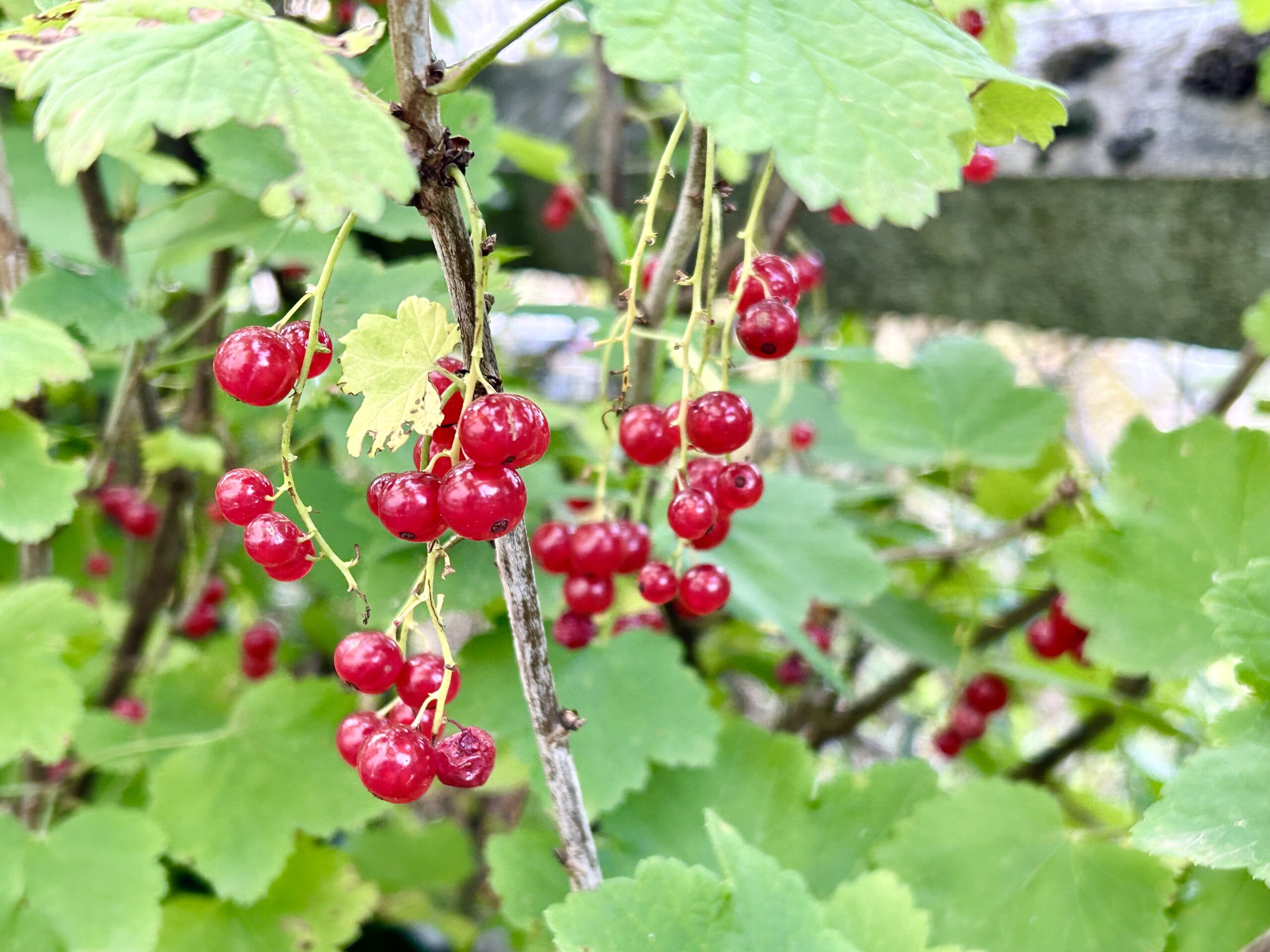
Less than two weeks to moving out of the house and move to Grenoble. Clearing and packing. One of the things that we cannot bring to Grenoble as it is, is the frozen red currants harvested from last year. To not let good food go to waste, I have decided to turn it into red current jam.

I have never eaten red currants until I came to France, until I got to have my own red current bush in my garden. Honestly, I find them a bit too tart to eat as standalone. I am hoping the sugar added to the red currant jam will soften the taste.


A quick online research shows that it’s actually quite easy to make the jam, basically the same as I what I did when I made strawberry jam last year: sugar is the only ingredient I have to add. And I have to add lots of sugar. The proportion of sugar to red currants varies among the different recipes, but it ranges between 55% to 75%. That is, 75g of sugar is added for every 100g of red currants.
One of the advantages of eating homemade food is that the cook gets to control the ingredients that go into the final product. I have a sweet tooth and I like indulging myself with chocolates, ice-cream, confectionary etc. However, these foods are store-brought products; I am aware of what goes into the food processing but I am not there to witness the actual food processing. Not being a witness means that I can turn a blind eye to what I put into my body when I consume these foods.

If I am the cook, it means I cannot ignore the amount of sugar recommended in the making of red currant jam. With 670g of red currants, it means I need to add at least 370g of sugar! It’s the equivalent of 31 tablespoonfuls of sugar! As I heap tablespoon by tablespoon of sugar on the saucepan of Vitamin C, K and antioxidants-rich red currants, I can picture vividly and feel viscerally my waist line and hips expanding, inch by inch! There is no way I am going to add that many spoonfuls of sugar. In the end, I have added only 100g of sugar which approximates to 15% of the weight of red currants or 8 tablespoons of sugar. As you can guess, the final product still retains a bit of its tartiness but it still works well as a bread spread. Most important of all, I feel less guilty when I feel like spoiling myself with a double serving of red currant jam!

The main difference between the making of strawberry and red currant jams is that I have to remove the seeds from the tiny red berries. To do that, the first step is to heat up the berries until they become soft and start to disintegrate. A spoon can be used to help press the berries open up in the saucepan. After that, the seeds are separated from the juice through a sieve. To help separate the seeds, the back of spoon is used to press the pulp against the sieve. Sugar is then added to the mixture and bring it to a boil. Details can be found in recipes such as Le journal des femmes and BBC Goodfood.
After making red currant jam from the last year’s harvest, I will be making another round of jam a couple of days just before I move out of the house. The second time and last round will be based on this year’s fresh harvest. I want to enjoy as much of the goodness from my garden as I can before I leave.
